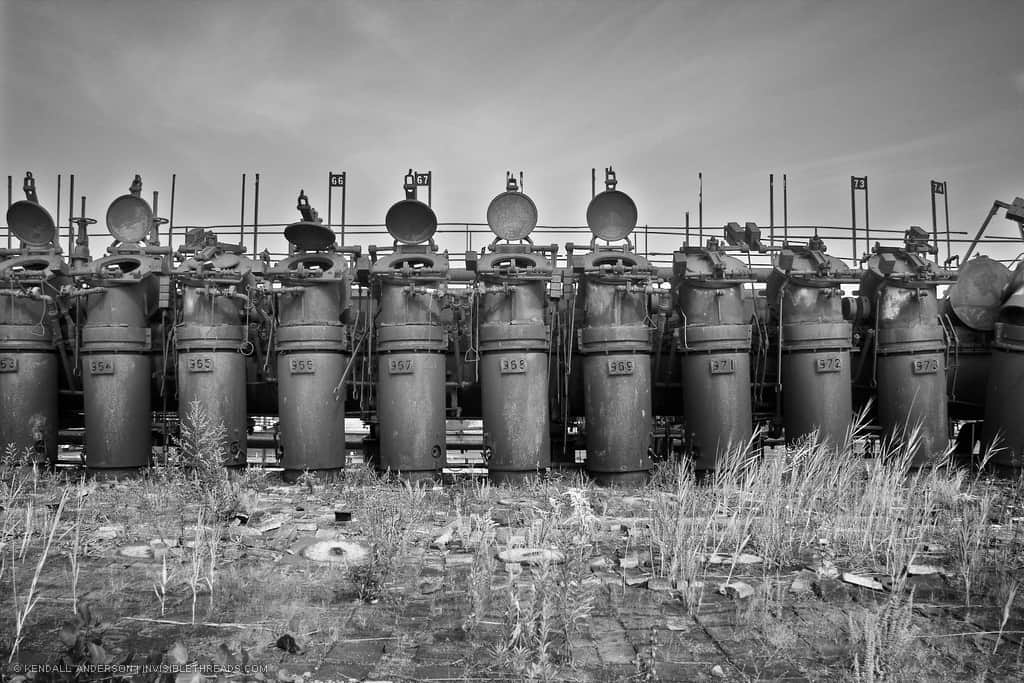
Coke Battery #9 Dec 11, 2010
This is a portion of one of the coke batteries above the ovens. In this case, it's coke battery #9.
What is it?
For years I've had no real understanding of what these things are. I'm not going to claim that I do now, but here's what I understand.
What we're seeing here are the elbows of the offtake pipes (also known as the standpipes or ascension pipes). These pipes come from the top of the coking chamber below. They allow by-products of the coking process ("volatile matter", gases) to escape. These elbows connect the oven to another collection area.
The covers are typically closed or in a sealed position during the coking process. The cover can be opened to vent the oven, or to provide access to clean out any buildup inside the standpipe.
When the covers aren't sealed, pollution escapes into the atmosphere. And that's how I learned about all of this. I came across this document published in 1977 from the US Environmental Protection Agency: Sealing Coke-Oven Charging lids, Chuck Doors, and Standpipe Elbow Covers: Survey of Current U.S. State of the Art. Exciting reading.
And now it's art...
In 2012, the artist Alan Shepp used this image as the basis for a 41"×120" bas relief sculpture. You can see the image on his website.